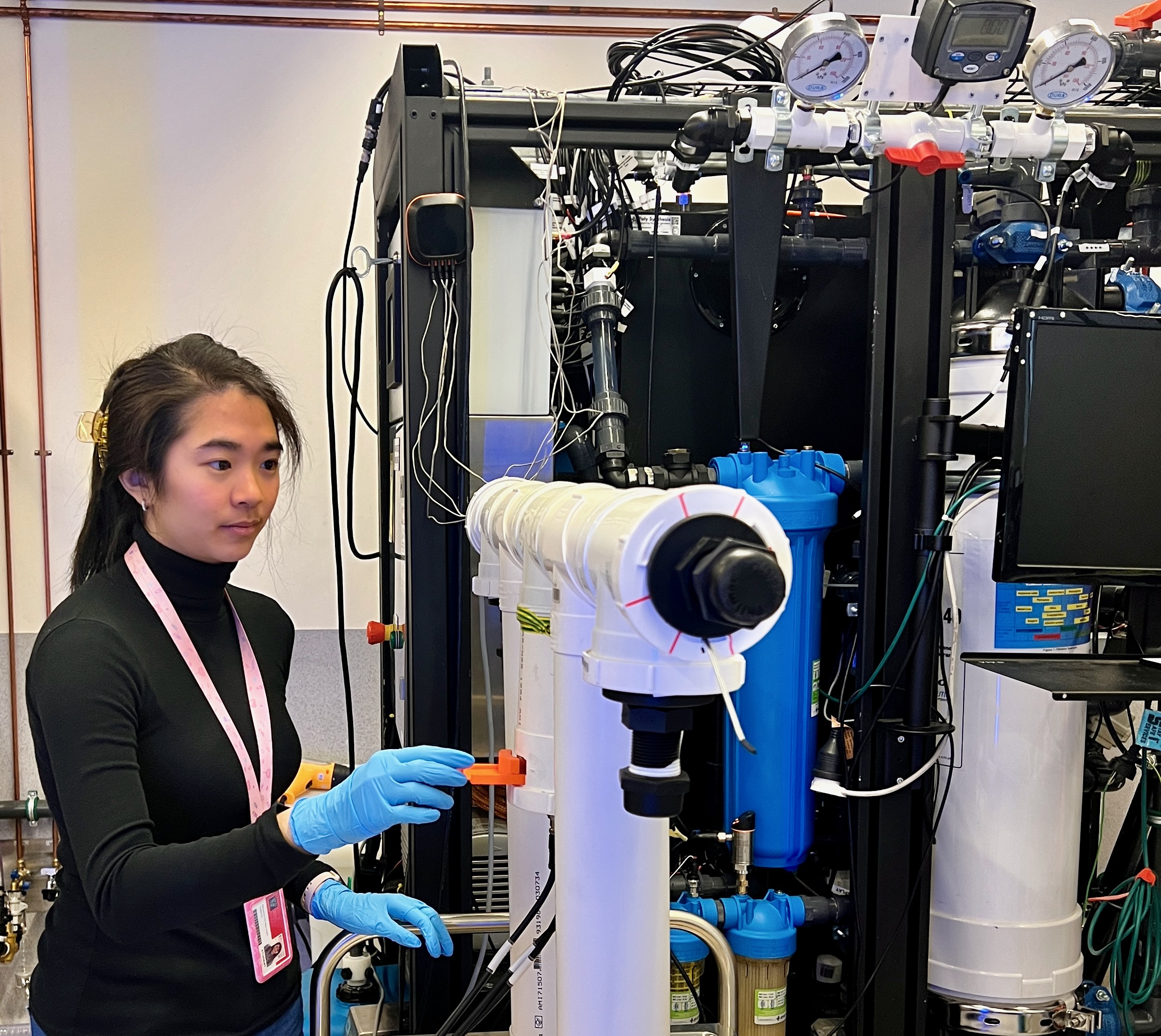
How do you check a water filtration system can effectively wipe out all nasty micro-organisms, including potential viruses such as covid or ebola, without coming face to face with those viruses? You turn to a phage.
If you decide to create a world’s best practice water filtration system, such as Water Source Australia’s Brolga unit, there is an expectation that it will include an ultra-violet disinfection system, capable of deactivating any microorganisms in the water. Among the smaller of these microorganisms are viruses, including everything from gastroenteritis to covid-19 to ebola, which can be difficult to kill, yet must be eliminated from any potable drinking water that the system produces.
The issue is that testing a UV system on such live viruses is problematic, to say the least, which is why Professor Enzo Palombo, and research assistant Maryanne Kuek, from Swinburne University of Technology’s Department of Chemistry and Biotechnology, have partnered with Water Source to select ‘phages’ that replicate nasty viruses, without the lethal parts.
‘The phages that we’re using are often called “good viruses” because they only attack bacteria, they don’t attack Mammalian cells (cells that form human tissues, organs, etc), and that’s why they’re safe to use as a surrogate,’ Maryanne explained. ‘Viruses have different structures. They might have a protein shell or a lipid shell. They might have a tail. Protein shell viruses are harder to kill because the shell is extra protection, but each virus has a distinct structure, so if a phage can replicate that structure, destroying that phage means you are also going to destroy another virus with that same structure.’
In other words, if researchers can create a phage with the same outer shell, tail and limbs of, say, covid-19, they know that killing that phage means the same technique would kill covid-19. The only difference is what is packed inside the outer shell.
‘In order to work with viruses with a higher risk group, we need approval from biosafety regulators to work with those viruses,’ Maryanne explained. ‘It's always harder to replicate them as well, so the phage virus that I've worked with is very easy to replicate, and also safe to use for us.’
The actual virus that Swinburne has replicated in order to put the Brolga UV through its latest test is a replica of an adenovirus, which can be the genesis of ailments such as croup, pneumonia, gastroenteritis, meningitis and encephalitis, among others.
‘Viruses have different types of structures, so my virus comes with a protein capsule as well as a tail. It has little legs as well, that help it attach to the bacteria, so that under the microscope it looks like a spider,’ Maryanne said.
Until the Brolga's UV system gets hold of it anyway. Swinburne’s testing aims to reduce the number of viruses from 10 to the power of 6 to 10 to the power of 2; which in layman’s terms means knocking out all viruses.
Water Source Australia’s Senior Engineering Manager, Zoran Desovski, said that the tests were tracking well, with planned further examination of the UV performance at different water flows and UV transmittance.
Zoran said he was confident that the Swinburne testing would confirm that the Brolga water is microorganism/virus-free and safe to drink at the point of use.
Image: Swinburne Uni researcher Maryanne Kuek prepares a batch of phages to test the Brolga's UV filter. (Pic: Nick Place)




